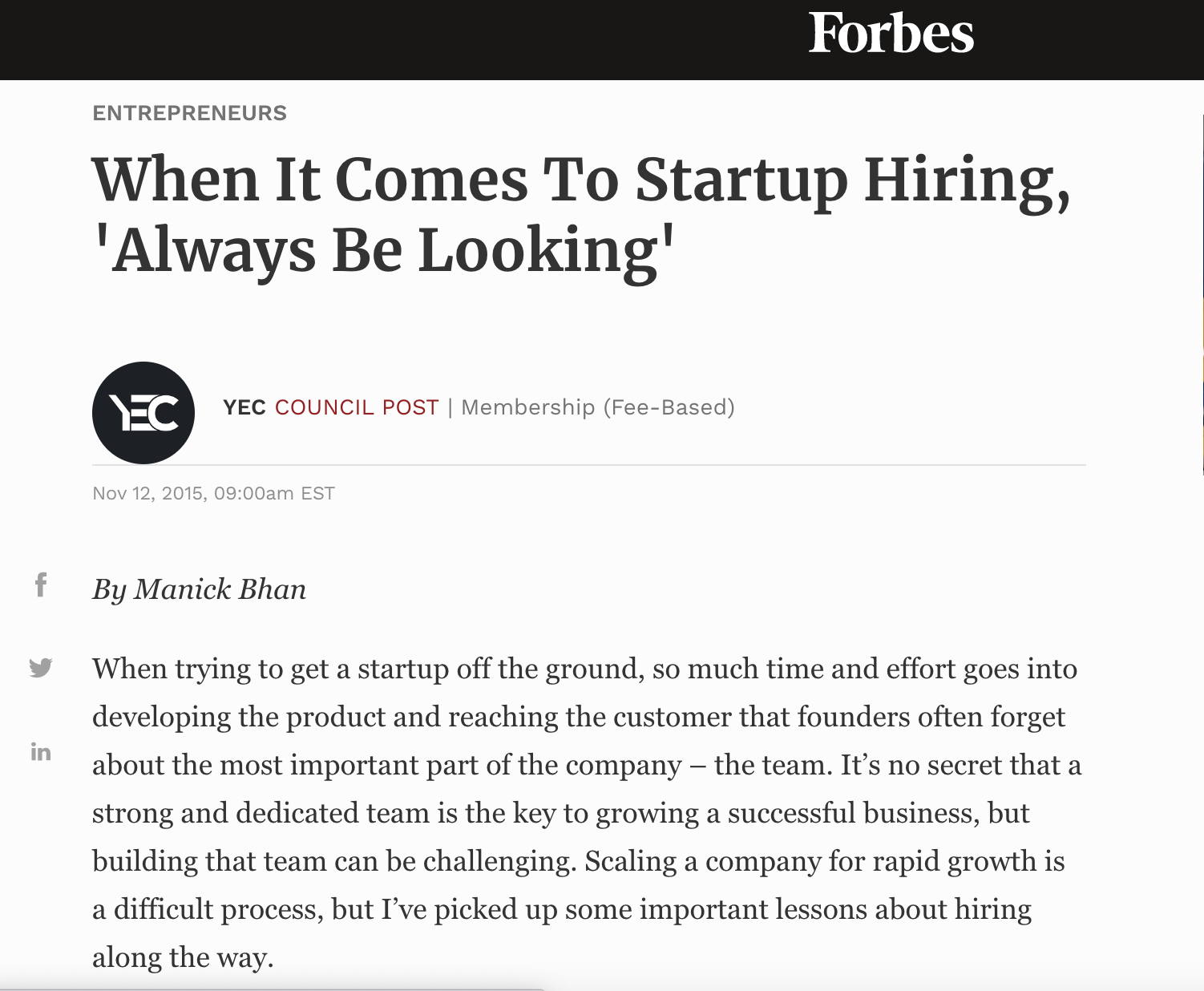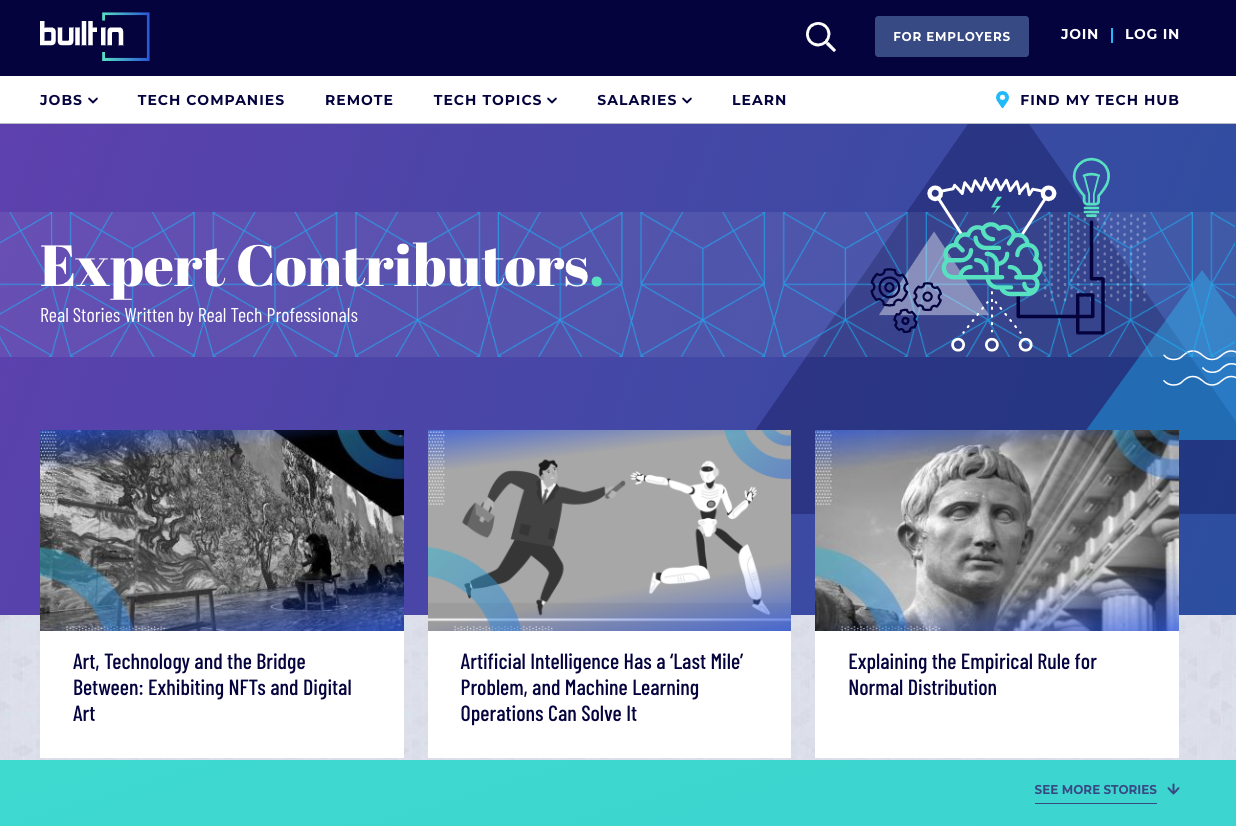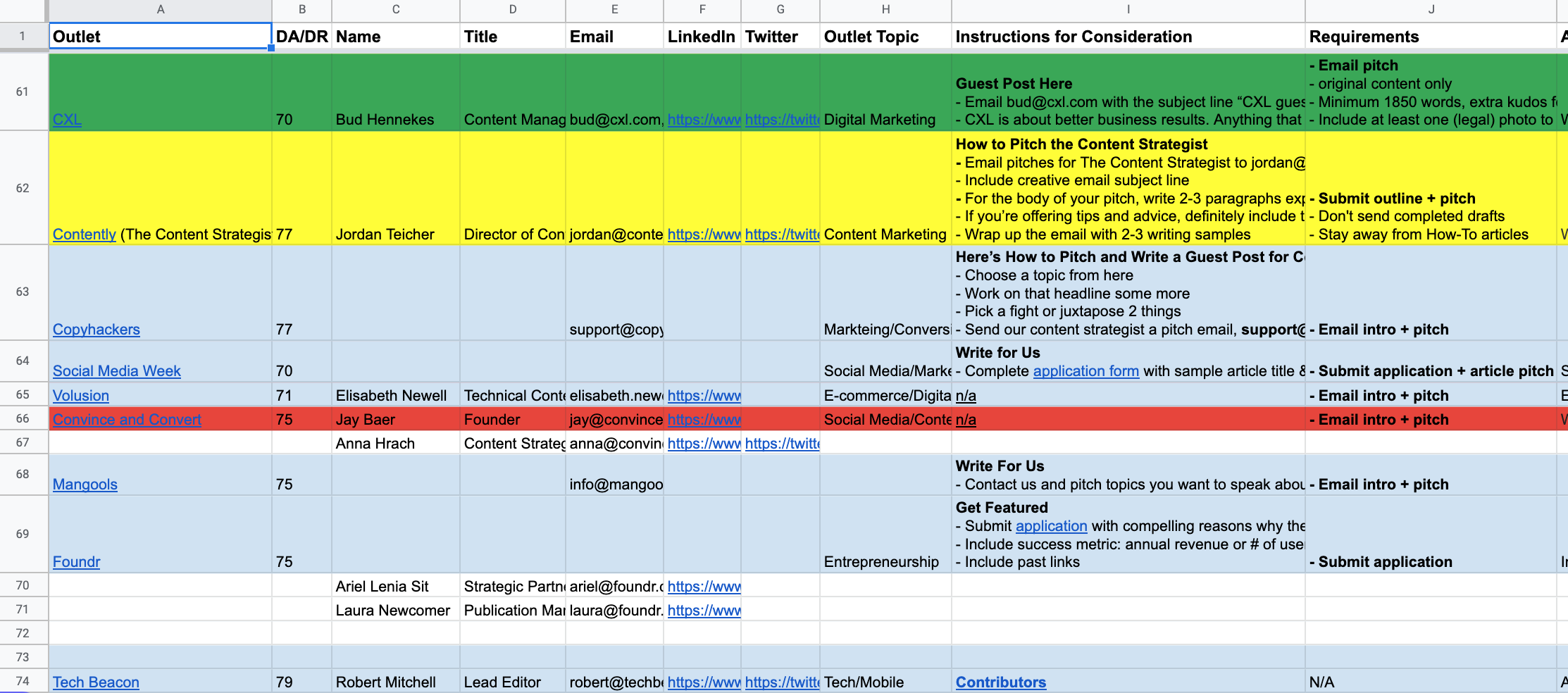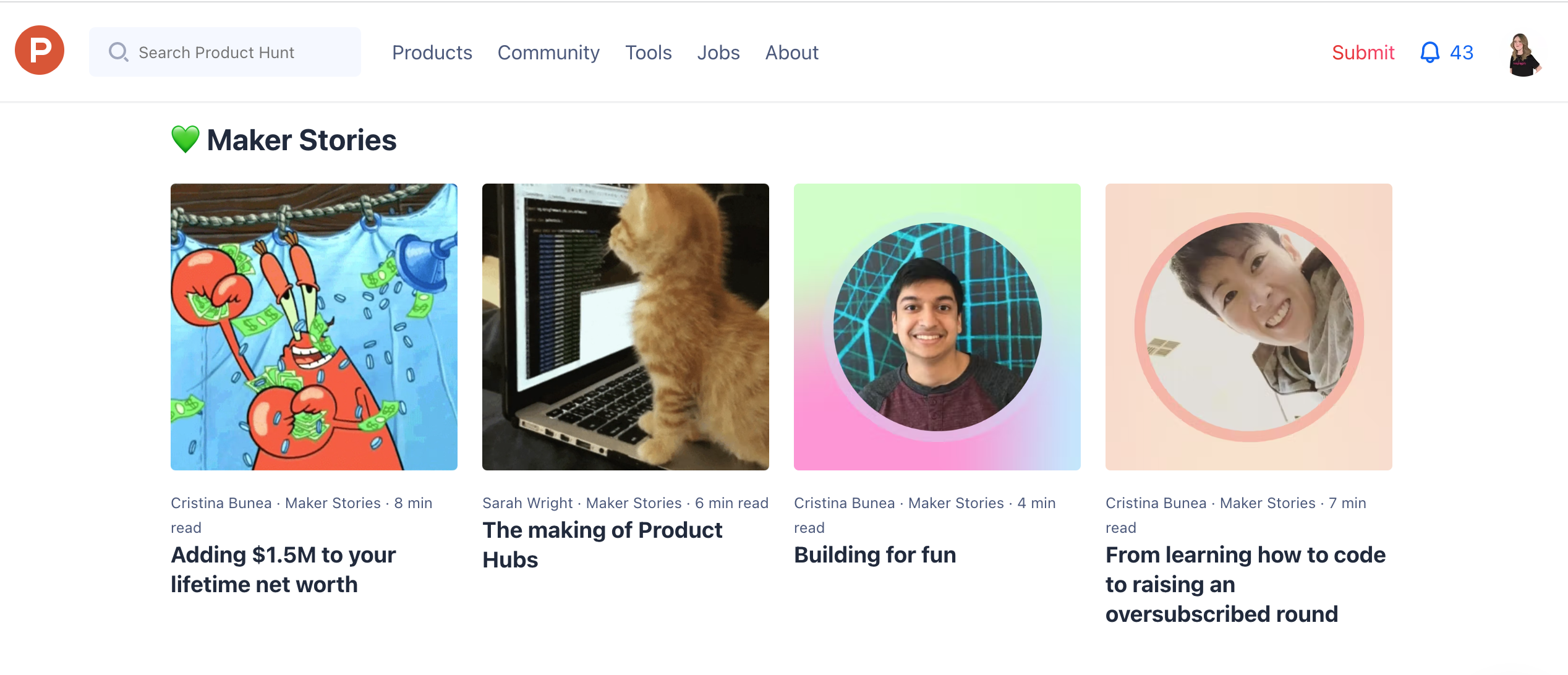Every brand wants to be considered a thought leader, but fewer can define what actually qualifies as thought leadership.
When done correctly, thought leadership marketing can help your business maintain authority in your industry.
But it is an earned strategy.
Your content marketing teams should only pursue thought leadership if your brand has the successes, perspectives, reputation, and innovations to back up your claims.
If your brand has earned your industry’s trust, then here is how to get started with this specific type of content.
What Is Thought Leadership?
When a brand or individual is considered a thought leader, others in the same industry consistently look to them for insights.
Thought leadership content may include research, opinions, personal anecdotes, or future predictions.
It may reference current events, evaluate industry trends, or spark debate among other thought leaders.
It can also take on many forms, including:
- Ebooks.
- White Papers.
- Infographics.
- Webinars.
- Podcasts.
- Op-eds.
- Original Research.
- And more!
The reality is that most content on the internet is quite repetitive and doesn’t showcase original thoughts.
So, what distinguishes thought leadership content?
Brand-specific insights that shape the larger conversations happening in your industry.
When Should I Get Started With Thought Leadership Content?
New businesses or brands will not be ready to pursue this type of content marketing.
Why? Because others in your industry are less likely to trust your insight if a depth of experience doesn’t back it.
Successful thought leadership does require a strong foundation in content marketing.
It also requires public relations, social media, and reputation management.
If your brand is actively engaging in the above efforts, you’re paving your way for a future as a thought leader.
Benefits Of Thought Leadership Content
Like all content marketing, creating high-quality thought leadership takes time and resources.
So, what are the benefits?
Earns Customer Loyalty
Thought leaders have already done the work of building credibility in their industry.
Because they have earned customers’ trust, they can use their thought leadership to gain customer loyalty.
In one Edelman and LinkedIn survey, almost 60% of respondents claimed that they found a brand’s thought leadership content more trustworthy than their traditional marketing materials.
And, thought leadership content doesn’t only influence customers.
It helps competitors, journalists, influencers – or anyone who has an interest in your space – see your brand as an authoritative industry voice.
Brings SEO Value
Thought leadership content that lives permanently on your website can rank for relevant keywords and drive organic traffic.
Off-site thought leadership content that includes backlinks to your website, whether in the author byline or within the content, sends link equity to your web pages, improving your Domain Authority and your overall ranking potential.
Unlike traditional guest posting, thought leadership can help you acquire backlinks from authoritative domains that are otherwise somewhat difficult to acquire.
Lead Generation
For B2B brands, in particular, thought leadership can help secure qualified leads.
Most B2B customers are highly knowledgeable in their fields. Many engage with thought leadership regularly to stay abreast of industry trends and innovations.
If they discover that your brand is the source of thought leadership, they are more likely to pursue you as their service provider or solution.
How To Develop A Thought Leadership Marketing Strategy
Creating thought leadership is much different than simply contributing a guest post to an industry website or offering how-to blogs on your own domain.
Thought leaders leverage their vast expertise and knowledge to bring their audience exceptional value that no one else can.
Identify Your Areas Of Expertise
When developing your thought leadership strategy, it’s important to consider what sets you apart from other thought leaders.
Think about the unique angles and perspectives that your brand can leverage:
- Do you have a differentiated product or technology?
- What do you do differently than other brands in your space?
- Have you done original research or reporting on industry topics?
- Have you found new solutions to well-known industry problems?
- What challenges or setbacks has your brand overcome?
These are just a few questions to help you brainstorm, as many topics can be utilized for thought leadership.
Remember that your unique perspectives may not necessarily be limited to your products and services.
Your workplace culture, company mission or values, growth strategy, and more can all be leveraged to create impactful thought leadership.
-
 Screenshot from Forbes.com taken by Author, August 2022
Screenshot from Forbes.com taken by Author, August 2022
Choose Your Thought Leaders
The byline of your thought leadership content must be from an individual at your company with the knowledge, experience, and expertise to speak with authority.
That often means C-Suite executives, founders, directors, or key stakeholders at your organization or business.
Titles are important in the world of thought leadership.
Your audience should be confident that the speaker is intimately connected to the earned secrets of your brand.
Determine Where Your Thought Leadership Content Will Live
Thought leadership content can be valuable assets that live permanently on your website.
You may want to leverage this content in email marketing, lead generation, or other parts of the customer journey.
Like a guest posting strategy, you can pitch thought leadership to other publications featuring commentary from expert voices.
-
 Screenshot from Expert Contributors Section of Builtin.com August 2022
Screenshot from Expert Contributors Section of Builtin.com August 2022
To get started with off-site thought leadership, put together a list of publications that want to feature industry experts.
-
 Image by author, August 2022
Image by author, August 2022
Then, reach out to the editors or content managers.
Ask if they are interested in publishing your brand’s original content.
Your outreach targets should have a higher Domain Authority score than your website and display strong SEO signals.
Create High-Quality Content
The most time-consuming part of any content marketing strategy is the time and effort to create high-quality content.
But unlike other content on your website, thought leadership must meet certain requirements to be categorized accordingly.
To create content that actually has the prestige and quality of thought leadership, you’ll need to meet the following standards.
Real World Examples
Because thought leadership is all about earned secrets, the support for your claims should be drawn from real-world experience.
-
 Screenshot from ProductHunt.com Maker Stories, August 2022
Screenshot from ProductHunt.com Maker Stories, August 2022
Your audience should feel like it’s getting an inside look at your business and the strategies or approaches that made you successful.
Personable Expert Voices
Although your brand name can carry the weight of the byline, the best thought leadership content has a genuine, personable voice, name, and face behind it.
You want your audience to feel as though it’s getting personal access to key decision makers and stakeholders at your business or organization.
Short-Term And Long-Term Value
Thought leadership content should be actively engaging with the conversations that are happening right now in your industry.
But there should also be evergreen elements to your thought leadership content that help that content rank organically in search.
You want your marketing team to be able to leverage thought leadership content for more than just the week that other brands’ hot takes show up on social media.
The best thought leadership will have long-term value, giving your team evergreen content for future inbound marketing efforts.
Informed By Your Products Or Services
Ultimately, thought leadership is still a content marketing strategy, and you can use it to earn new leads and customers.
Still, the actual products or services your brand provides are what inform the best thought leadership.
That doesn’t mean a front-and-center sales pitch. Your products and services should have a more subtle presence and be seen as a key source of where your expertise comes from.
Promote Your Content And Thought Leaders
Building a thought leadership presence means creating content and sharing it on social media sites with the loyal audience your organization has worked so hard to earn.
Most thought leaders are active (and verified!) on websites like Twitter, where real-time conversations take place in response to industry happenings.
Journalists also look at thought leaders to provide insights or expert sourcing when reporting on industry news and love to cite content that can serve as strong evidence in their reporting.
You can use your thought leadership content to enhance your PR outreach, as journalists will prefer to feature prominent thought leaders over less reputable sources.
Conclusion
It will take time and proven success to reach the status of a thought leader.
But, once earned, thought leadership marketing has a fantastic way of enriching all other areas of your digital strategy.
Deploy this strategy consistently, and you’ll earn the loyalty of industry professionals who are always waiting to hear what your brand will say next.
More resources:
Featured Image: Andrii Zastrozhnov/Shutterstock
